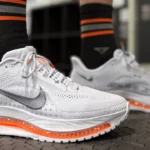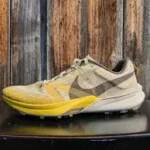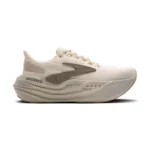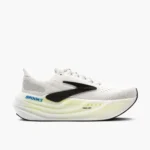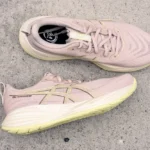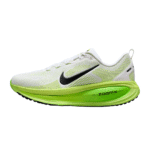The Nike Terra Kiger 10 is the latest evolution in Nike’s long-standing trail running shoe series. With a decade of refinement behind it, the Terra Kiger 10 continues to position itself as a nimble, responsive trail runner designed for speed and agility over technical terrain. Whether you’re an ultra-marathoner looking for a lightweight shoe or a weekend trail warrior tackling your local singletrack, the Terra Kiger 10 aims to deliver comfort, protection, and performance.
In this in-depth Nike Terra Kiger 10 review, we’ll dive deep into the shoe’s construction, performance, pros and cons, and how it compares to competitors like the Hoka Speedgoat, Salomon Sense Ride, and Altra Lone Peak.
Quick Specs
-
Weight: 9.8 oz (Men’s size 9) / 8.7 oz (Women’s size 8)
-
Drop: 4 mm
-
Stack Height: 30 mm heel / 26 mm forefoot
-
Best For: Technical trails, moderate-distance runs, racing
-
Terrain: Rugged, rocky, muddy, and dry trails
-
Key Features: Zoom Air unit, React foam midsole, rock plate, multidirectional lug pattern
Design and Aesthetics
The Terra Kiger 10 continues Nike’s tradition of sleek and stylish design with a trail twist. It’s not just functional but also visually impressive. The color options range from earthy tones to bold and bright trail-ready hues. The shoe’s streamlined silhouette makes it look fast even when sitting still.
Nike has incorporated ripstop mesh and durable overlays in high-wear areas to prevent early breakdown. The forefoot features a protective toe cap, while the heel and sidewalls have been reinforced with layered materials to shield against trail abrasions.
👟 Upper
The upper has seen a few tweaks compared to the Kiger 9. It’s now more secure, especially around the heel collar, with a gusseted tongue that prevents debris from entering the shoe. The mesh is breathable but also slightly denser to increase durability.
-
Fit: True to size for most runners, but narrow in the midfoot. Wide-footed runners may feel a bit restricted.
-
Lockdown: Excellent, especially with the Flywire cables integrated into the lacing system.
-
Breathability: Above average, especially in drier climates.
Midsole: React Foam and Zoom Air
The midsole of the Terra Kiger 10 features a full-length React foam compound, known for its energetic rebound and soft underfoot feel. In addition, Nike retains the Zoom Air unit in the forefoot, providing an extra pop when climbing or accelerating on flats.
This combination gives the Kiger a snappy ride on both dirt trails and rocky paths. It’s not marshmallow-soft like Hoka’s foam, but that’s intentional. The Kiger is for runners who value ground feel and responsiveness over pillowy comfort.
-
Cushioning: Moderate – enough for 20–30 km runs without fatigue.
-
Energy Return: High, thanks to React + Zoom Air.
-
Trail Feel: Excellent. You feel connected to the terrain but protected enough to avoid discomfort.
Outsole and Traction
The Nike Terra Kiger 10 outsole is one of its most improved components. The multidirectional lugs (up to 4.5 mm depth) provide reliable grip in both uphill and downhill situations. Whether on wet rock, gravel, or dusty switchbacks, the Kiger 10 holds its ground.
Nike has refined the rubber placement with harder rubber on high-wear zones and softer, stickier rubber on the forefoot and heel. This dual-density approach boosts grip without adding weight.
-
Traction: Excellent, especially on dry to moderately wet trails.
-
Mud Handling: Fair – lugs can get caked in deep mud.
-
Durability: Above average, with most users reporting 300–500 miles of life.
Protection: Rock Plate + Toe Guard
The rock plate in the forefoot is subtle but effective. You can bomb down rocky descents without worrying about sharp jabs from stones. Combined with the moderate stack height and protective toe cap, the Kiger 10 offers just the right balance between agility and shielding.
While not as armored as Salomon’s Sense Ultra or the Hoka Mafate Speed, it’s plenty durable for most technical terrains.
Fit and Comfort
The Nike Terra Kiger 10 fits snugly, especially in the midfoot and heel. Runners who prefer a locked-in feel will appreciate this. The toe box is moderately roomy but not as spacious as the Altra Lone Peak or Topo Athletic trail shoes.
There’s good padding in the collar and tongue, reducing any chance of hot spots or pressure points. It’s designed for comfort over mid-distance efforts (10–25 km), though some runners have taken it up to marathon distance with no complaints.
Performance on the Trails
🏔 Uphill
Lightweight and responsive, the Kiger 10 is a great climber. The Zoom Air unit in the forefoot helps with push-off, and the grippy outsole ensures confident footing on steep terrain.
⬇️ Downhill
The combination of heel cushioning, rock plate, and grip gives you good confidence on the descents. While not ultra-cushioned, it’s protective enough for rocky drop-offs.
🛤 Flats and Hardpack
Thanks to the React foam, the Kiger performs well on flat trails and even transitions decently onto pavement. That makes it a great hybrid choice for trail races that include road connectors.
How It Compares
| Shoe | Stack Height | Drop | Weight | Terrain | Notes |
|---|---|---|---|---|---|
| Nike Terra Kiger 10 | 30/26mm | 4mm | 9.8 oz | Technical | Light, nimble, moderate protection |
| Hoka Speedgoat 6 | 38/34mm | 4mm | 10.2 oz | All | Plush, max cushion, great grip |
| Altra Lone Peak 8 | 25mm | 0mm | 10.4 oz | Technical | Wide toe box, zero drop, natural ride |
| Salomon Sense Ride 5 | 32/24mm | 8mm | 9.5 oz | All | Smooth, versatile, more cushioning |
| Brooks Cascadia 17 | 32/26mm | 6mm | 11 oz | Technical | Durable, stable, less nimble |
Pros and Cons
✅ Pros
-
🚀 Lightweight and agile – ideal for fast-paced trail runs
-
🏞 Responsive ride – React foam + Zoom Air = energetic transitions
-
🧗 Great grip – versatile outsole handles most trail conditions
-
🛡 Good protection – rock plate and toe guard do their job
-
🧵 Durable upper – ripstop mesh stands up to rugged terrain
❌ Cons
-
👣 Narrow fit – may not suit wide-footed runners
-
☁️ Less cushioning – not ideal for ultra-distances or long recovery runs
-
💧 Average mud performance – lugs can struggle in deep muck
-
🛣 Not for casual road use – better suited to true trail environments
Who Should Buy the Nike Terra Kiger 10?
The Nike Terra Kiger 10 is ideal for:
-
Runners seeking a lightweight trail shoe with great trail feel
-
Trail racers looking for speed and grip
-
Moderate-distance trail runners (10–30 km)
-
Fans of Nike looking for a versatile, fast trail option
-
Anyone needing a responsive, agile ride on technical terrain
Who Should Skip It?
Skip the Kiger 10 if:
-
You need max cushion for long ultras or recovery runs (consider Hoka Speedgoat or Mafate)
-
You have wide feet or prefer a roomy toe box (try Altra or Topo)
-
You run on wet, muddy trails frequently – the Kiger isn’t the best mud shoe
Verdict: Is the Terra Kiger 10 Worth It?
The Nike Terra Kiger 10 is a confident, capable trail shoe for runners who like to move fast and feel connected to the ground. It’s not overbuilt or overly cushioned—and that’s the point. It excels in technical, dry terrain, offering protection, responsiveness, and agility in a lightweight package.
If you’re a trail runner who values speed, energy return, and grip over plush comfort, the Terra Kiger 10 is absolutely worth considering. It’s not the tankiest or the softest, but it’s fast, fierce, and fun.
Nike Terra Kiger 10 Review Summary
| Category | Score (out of 10) |
|---|---|
| Comfort | ⭐️⭐️⭐️⭐️⭐️⭐️⭐️⭐️ (8.0) |
| Cushioning | ⭐️⭐️⭐️⭐️⭐️⭐️⭐️ (7.0) |
| Traction | ⭐️⭐️⭐️⭐️⭐️⭐️⭐️⭐️⭐️ (9.0) |
| Durability | ⭐️⭐️⭐️⭐️⭐️⭐️⭐️⭐️ (8.0) |
| Responsiveness | ⭐️⭐️⭐️⭐️⭐️⭐️⭐️⭐️⭐️ (9.0) |
| Fit & Lockdown | ⭐️⭐️⭐️⭐️⭐️⭐️⭐️⭐️ (8.0) |
Overall Rating: 8.2 / 10 ✅
FAQs About the Nike Terra Kiger 10
Q: Is the Nike Terra Kiger 10 good for hiking?
A: While it’s built for trail running, it can double as a lightweight hiking shoe for fastpacking or day hikes.
Q: How does the Terra Kiger 10 fit?
A: True to size for most, but snug in the midfoot and heel. Wide-footed runners might need to size up or try something else.
Q: Does it work for road-to-trail transitions?
A: Yes, though it shines most on actual trail. Pavement is fine for short sections, but it’s not a hybrid shoe.
Q: What distances is it best for?
A: 10–30 km is the sweet spot. Some experienced runners may stretch it to marathon distance on forgiving terrain.

